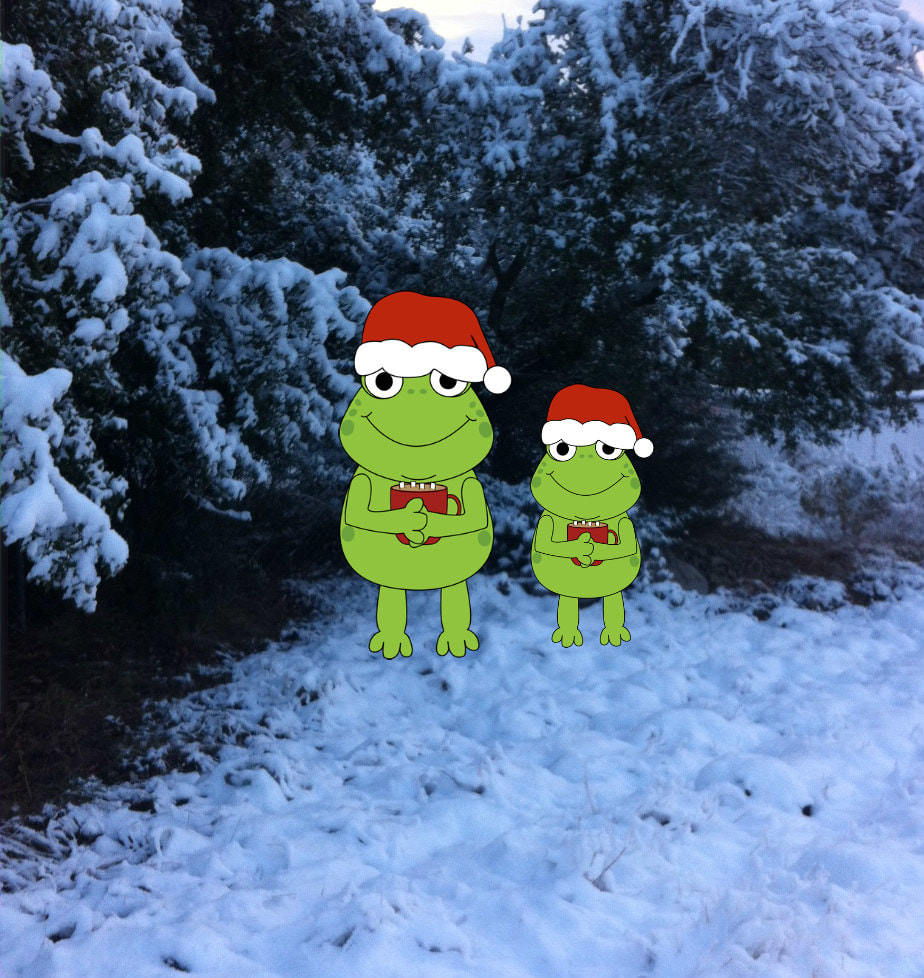Quigley wanted to know if snow was simply frozen water. Of course, frozen rain is called sleet. So what is snow? Snow is a cluster of hundreds of tiny ice crystals that fall from a cloud.
Here are a few snow facts that may be new to you,
1. The tiniest snowflakes are called diamond dust and are no larger than the diameter of a human hair. And since they are so small and so lightweight, they remain suspended in the air and appear like sparkling dust in the sunlight. Diamond dust is most often seen when it is bitterly cold and the temperature dips to below 0 degrees F. (-17.77 C)
2. Snowflake size and shape is determined by cloud temperature and humidity. 25 degrees to 32 degrees (F) - thin hexagonal plates and stars; 21 degrees to 25 degrees (F)- needle-like; 21 degrees to 14 degrees (F) - hollow columns; 14 degrees to 10 degrees (F) - sector plates; 10 degrees to 3 degrees (F) - star-shaped "dendrites"; and -10 degrees to -30 degrees (F) - plates, columns.
3. The largest single snowflake to ever fall was alleged to be a whopping 15 inches (38.1 centimeters) wide! It was recorded in 1887 in Fort Keogh, Montana. Some of the largest non-aggregate (single snow crystal) snowflakes ever observed measured 3-4 inches, tip to tip. If you've ever experienced snow, you know that's pretty big!
4. The average snowflakes falls at a speed of 1-6 feet per second (0.304 meters to 1.82 meters).The fairly large surface area and lightness of a snowflake make it act like a parachute, causing it's slow descent through the sky. By comparison, the average raindrop falls 32 feet per second (9.75 meters).
5. Snowflakes have a six-sided structure because ice does. When water freezes into individual ice crystals, its molecules stack together to form a hexagonal lattice. As the ice crystal grows, water can freeze onto its six corners multiple times, causing the snowflake to develop a unique, yet still six-sided shape.
6. Snowflake designs are a favorite among mathematicians because of their perfectly symmetrical shape. "However, if you've ever looked at an actual snowflake you know it often appears broken, fragmented, or as a clump of many snow crystals — all battle scars from colliding with or sticking to neighboring crystals during its trek to the ground," scientists tell us.
7. No two snowflakes are exactly alike because each one takes a slightly different path to the ground and, thus, encounters slightly different atmospheric conditions along the way. This accounts for different shapes and growth rates.
8. Snowflakes appear white but are actually clear. When studied under a microscope, individual snowflakes do appear clear. It's when they all get piles together that they begin to look white. White light is made up of all colors in the visible spectrum so our eyes see snowflakes as white.
9. Snow is an excellent noise-reducer. Why? As they accumulate on the ground, air becomes trapped between the individual snow crystals, which reduces vibration. It is thought that snow cover of less than 1 inch (25 mm) is enough to dampen the acoustics across a landscape. As snow ages, however, it becomes hardened and compacted and loses its ability to absorb sounds.
10. Snowflakes covered in ice are called "rime"snowflakes. Snowflakes are made when water vapor freezes onto ice crystal inside of a cloud, but because they grow inside of clouds that also house water droplets whose temperatures are cooled below freezing, the snowflakes sometimes collide with these droplets. If these supercooled droplets of water collect and freeze onto nearby snow crystals, a rimed snowflake is born. Snow crystals can be rime free, have a few rime droplets, or be completely covered with rime. If rimed snowflakes blob together snow pellets, also called graupel, then forms.
Our snow in Lily Pad never lasts long and is usually gone within a few hours. Little bro, Mom, Dad, and I all had a blast while it was here. Whatever your plans are for this weekend, try to include some time outside appreciating the art and science of nature. And if you get some snow, take a closer look. Snow is really a small, frozen miracle.
See you all back here on Monday!
Peace.

 RSS Feed
RSS Feed